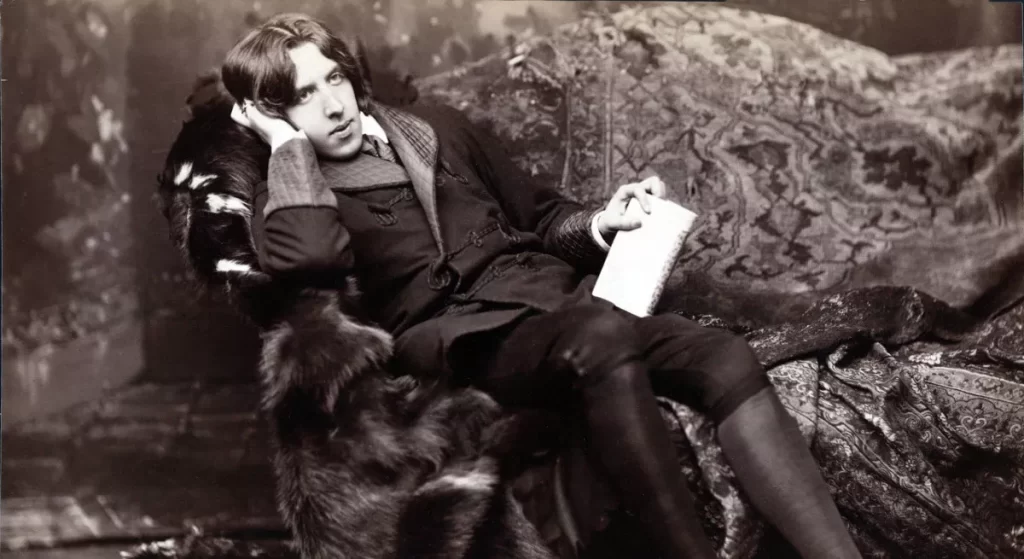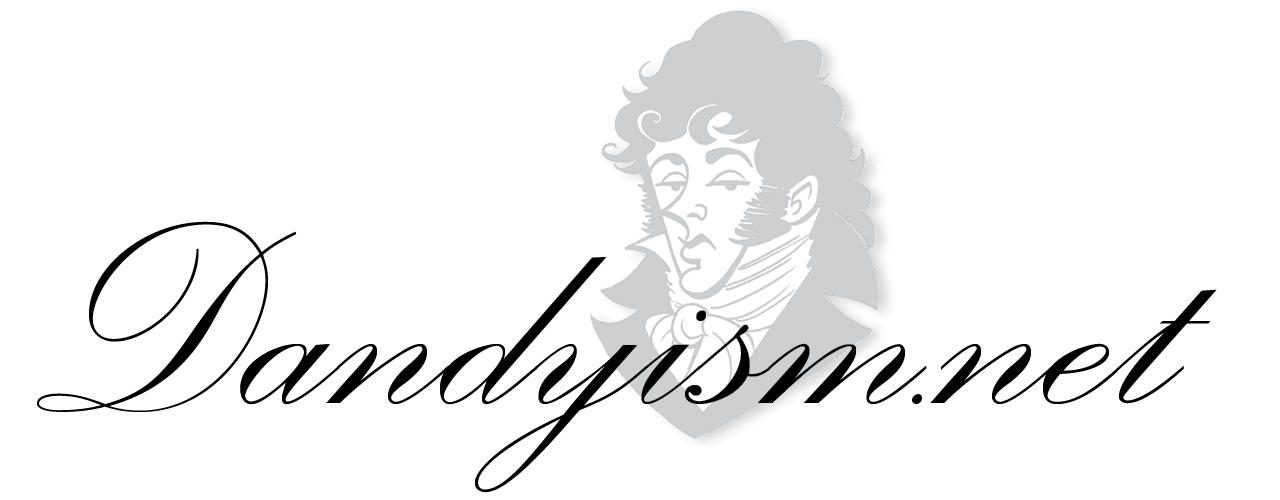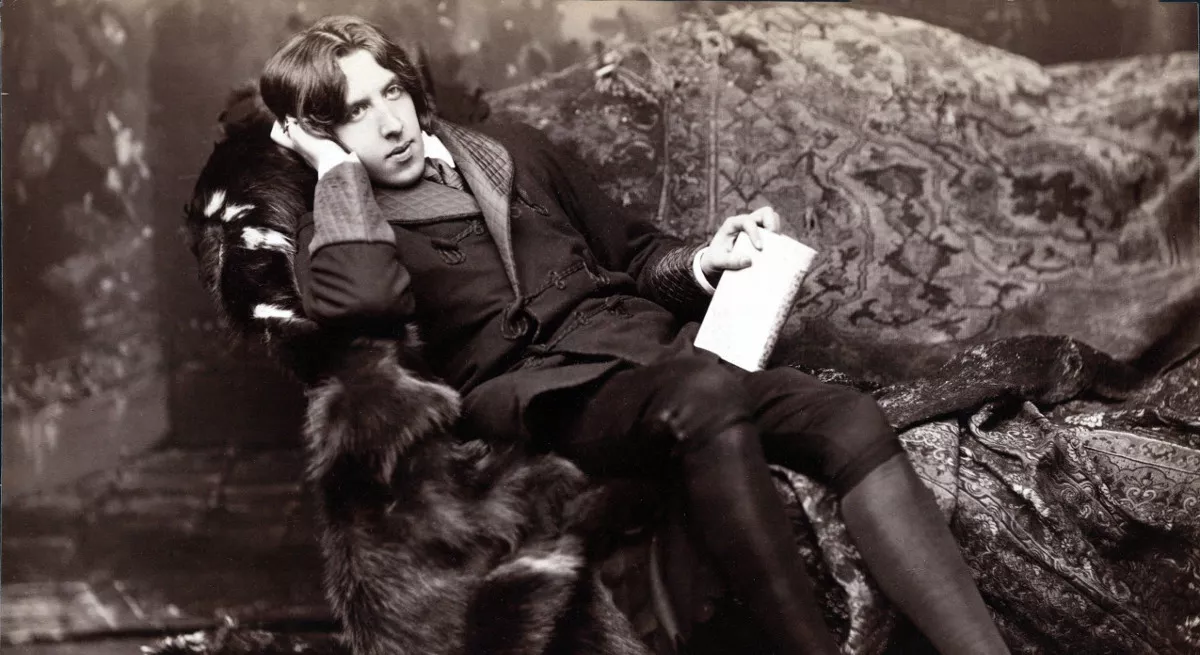
There is no excitement quite like that of unwrapping books you have just gotten in the mail. Pretensions to maturity and sophistication fly out the window as you manically tear the packaging apart like an eight-year-old opening a long sought-after birthday present, pausing only to wonder, “Must they always wrap these things in reinforced steel and concrete?”
So it was when two books recently arrived from online bookseller Alibris. One of these, “The Aesthetic Adventure” by William Gaunt, was not new to me. I had owned a paperback copy of it before. It was one of those seminal books in my development as a student of aesthetics and as a dandy, holding an honored place alongside Holbrook Jackson’s “The Eighteen Nineties,” Ellen Moer’s “The Dandy,” and Richard Ellmann’s “Oscar Wilde.” But that copy fell apart some years back and I discarded it. Reminded of “The Aesthetic Adventure” a few weeks ago by a conversational thread in another online community, I determined to find another copy.
While perusing the Alibris website for “The Aesthetic Adventure,” I also came across a second book, the title of which fired my interest. “The New Aestheticism” is edited by a pair of English profs, John J. Joughin and Simon Malpas, and the books’s jacket-flap pap seemed promising:
The rise of literary theory spawned the rise of anti-aestheticism, so that even for cultural theorists, discussions concerning aesthetics were often carried out in a critical shorthand that failed to engage with the particularity of the work of art… This book introduces the notion of a new aestheticism… focusing on the specifically aesthetic impact of a work of art or literature has the potential to open radically different ways of thinking about identity, politics and culture.
What this seemed to say to me at the time was that a few radically level-headed, if not “radically different,” scholars had found the courage the toss the theoretical baby out with the Lacanian bath water, take a stand and dare to say what’s good and what’s bad in a work of art on its own merits. I imagined a book full of eloquent essays by latter-day Walter Paters writing in hard, gemlike and readable prose. In addition, the book’s price led me to think that it might also offer a number of illustrations, perhaps even color plates, providing examples of new-found, contemporary expressions of skillfully crafted beauty. Silly me.
But I get ahead of the story. It happened that I opened Gaunt’s “The Aesthetic Adventure” first. This cloth-bound hardback edition, published by Harcourt, Brace and Company in 1945, wore its original jacket, featuring Max Beerbohm’s caricatures of James McNeill Whistler and Thomas Carlyle, along with the legend, “A witty and highly entertaining history of the Bohemian movement in art and writing.” I don’t remember if my paperback version included the same words, but they describe “The Aesthetic Adventure” perfectly.
“The Aesthetic Adventure” is a cultural history of aestheticism, that movement so tightly summed up in the Theophile Gautier’s now timeless phrase, l’art pour l’art. Gaunt takes us through the aesthetic movement of the late 19th and early 20th centuries as if we were there, looking over Whistler’s shoulder. Its 262 pages deftly weave art, literary, philosophical and cultural history together with the lives of the artists, writers, thinkers, patrons and characters who made the aesthetic movement so wonderfully engaging and so deeply flawed: Matthew Arnold, Roger Fry, Max Beerbohm and his bother, Herbert, Audrey Beardsley, Edward Burne-Jones, Earnest Dowson (now remembered mostly for his quip, “Absinthe makes the tart grow fonder”), Walter Pater, Oscar Wilde, James McNiell Whislter, George Moore and a host of others. The book takes us up to the time when Europe’s aesthetic illusions were shattered by the shells of the First World War.
In Gaunt’s able hands the era comes alive. Reading “The Aesthetic Adventure,” it’s easy to get caught up in the bohemian players’ enthusiasm, to picture their late nights drinking at the Cafe Royal or trading barbs at the Rhymer’s Club, where, Gaunt writes, “wit sparkled, enmity smiled, the poor were entranced by splendor and the rich by talent.”
Gaunt continues: “Sometimes Dowson came here [to the Rhymer’s Club] surfeited from the streets, finding it neutral ground between the society he disliked and the netherworld to which he was so irresistibly drawn, discovering there the typical balance of the time between pleasure and ruin.”
“Surfeited from the streets… The typical balance of time between pleasure and ruin.” I don’t know if I have ever read a more eloquent passage about the destructive fascination that low life holds. The book is full of such clear-eyed, thoughtful passages. Gaunt’s really is the quintessential history of the “art for art’s sake” movement, the way Ellen Moer’s “The Dandy” is the quintessential history of dandyism.
When I finally got around to cracking “The New Aestheticism,” I was excited to read what this new movement might hail. Though the book turned about to be a plain paperback with fine print and no illustrations, I dove in. I was soon left wondering however, exactly what planet these new aesthetes lived on.
Given the current state of academia, it’s not surprising that no one has come up with a phrase to describe Joughin and Malpas’s new aestheticism as neatly as Gaunt’s old aestheticism was summed up with Gautier’s “art for art’s sake.” And, unfortunately, Joughin and Malpas themselves can’t really be bothered to try, but instead fall back on the obfuscatory, pomo lit-babble common in today’s humanities to explain away any claim this new aestheticism of theirs might have on uncovering the beautiful.
Undaunted, I read on and discovered this little gem: “Perhaps the most basic tenet we are trying to argue for is the equiprimordiality of the aesthetic – that, although it is without doubt tied up with the political, historical, ideological, etc., thinking it as other than determined by them, and therefore reducible to them, opens space for an artistic and literary specificity that can radically transform its critical potential and position with regard to contemporary culture.”
I’m not sure who this “them” is, but the poor bastards certainly have my sympathy, trapped as they are in a pool of equiprimordial quicksand. So much for the new aestheticism. There’s no truth and no beauty in the world, just a bunch of dissembling dialectics trying to describe the indescribable. So what’s the point, you ask? Who knows? You would think these people would get bored with writing the same paper with the same conclusion over and over again, but the stream of drivel seems endless. If the flaw in the old aestheticism was in its practitioners’ attempt to create a beauty far removed form the world around them, the flaw in the new aestheticism is in it adherents’ refusal to see any beauty in the world at all not tainted by politics or economics.
Some may find the clarity, conciseness and elegance of phrase that marks good writing like that of William Gaunt reactionary. I think, in academia at least, these qualities have been buried so long — 50 years or more — that to bring them back would be nothing short of revolutionary. And should such a revolution find a clean-shaven Che Guevara to lead it, the excitement of getting books in the mail may end in disillusionment less often. — MICHAEL MATTIS


1 thought on “Adventures In Beauty”